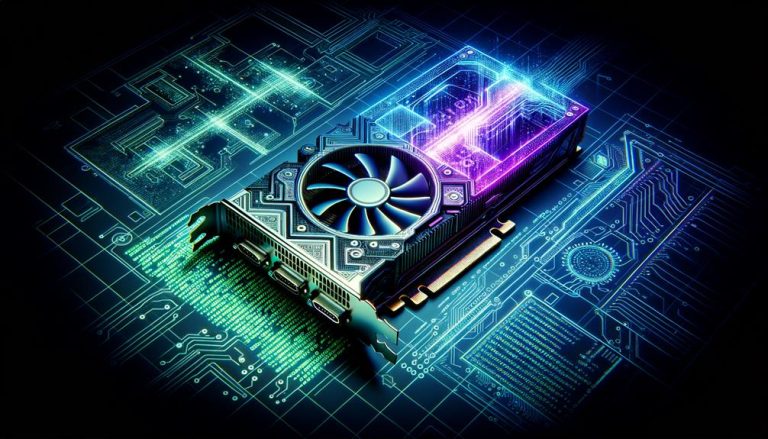We're here to take you on an exciting journey into the world of Generative Adversarial Networks (GANs). These cutting-edge deep neural networks have revolutionized machine learning, allowing us to not only learn from data but also generate new data with the same characteristics.
Join us as we explore the different types and variants of GANs, tackle training challenges, and delve into their wide range of applications, from image manipulation to text-to-image synthesis.
Get ready to unleash the power of GANs and unlock new possibilities in artificial intelligence.
Key Takeaways
- GANs are a deep neural network framework that can learn from training data and generate new data with the same characteristics.
- GANs consist of two neural networks, the generator and the discriminator, which compete against each other.
- Generative models focus on the latent distribution of a dataset to return a probability for an example.
- GANs have the potential to generate diverse and realistic data but can suffer from mode collapse and instability during training.
Understanding Generative Adversarial Networks (GANs)
We will explore the concept of Generative Adversarial Networks (GANs) and gain a deeper understanding of their functionality.
GANs are a revolutionary framework in deep neural networks that have the potential to liberate our understanding of data generation.
GAN architecture consists of two neural networks, the generator and the discriminator, which engage in a competitive game. The generator creates fake data, while the discriminator distinguishes between real and fake data.
During the GAN training process, the generator learns to generate more authentic data by fooling the discriminator, while the discriminator becomes more adept at distinguishing real from fake data.
This adversarial dynamic drives the GAN to produce increasingly realistic and diverse data.
Types and Variants of GANs
There are various types and variants of GANs that have been developed to address different challenges and enhance the capabilities of generative models. One popular variant is the Variational Autoencoder (VAE), which is an autoencoder with regularized encodings distribution. While VAEs and GANs both fall under the category of generative models, they have different learning processes. Training GANs can be more complex and time-consuming compared to VAEs. Other types of GANs include the Deep Convolutional GAN (DCGAN), which uses CNNs and specific guidelines for architecture. Progressive GANs progressively increase the resolution of generated images, while Conditional GANs involve conditional generation of images based on auxiliary information. Incorporating these different types and variants of GANs allows for a wider range of applications and advancements in the field of generative models.
| GAN Variant | Description |
|---|---|
| Variational Autoencoder (VAE) | Autoencoder with regularized encodings distribution |
| Deep Convolutional GAN (DCGAN) | Uses CNNs and specific architectural guidelines |
| Progressive GANs | Progressively increases resolution of generated images |
| Conditional GANs | Involves conditional generation of images based on auxiliary information |
Training Challenges and Issues With GANs
Training GANs can pose significant challenges and give rise to various issues that need to be addressed for successful implementation. Here are three key challenges and issues that arise during the training of GANs:
- Non-convergence: Model parameters can oscillate and fail to converge, preventing the generator from producing authentic images. This can be caused by an imbalance between the discriminator and generator or inappropriate hyperparameter settings.
- Mode collapse: The generator may produce a limited variety of samples, resulting in a lack of diversity in the generated data. This can occur when the generator learns to exploit weaknesses in the discriminator rather than learning the true data distribution.
- Diminished gradient: The generator gradient can vanish, hindering the learning process. This can happen when the discriminator becomes too confident in its predictions, leading to a lack of useful gradient information for the generator.
Addressing these challenges and issues is crucial to ensure the successful training and deployment of GANs for generating high-quality and diverse data.
Applications of GANs in Image Manipulation
The versatility of GANs is evident in their wide range of applications in image manipulation. One notable application is image generation for virtual reality, where GANs can create realistic and immersive environments by generating high-quality images.
GANs also play a crucial role in deepfake detection and prevention. Deepfakes are manipulated videos or images that appear genuine but are actually synthetic. GANs can be used to develop robust deepfake detection algorithms by training discriminators to differentiate between real and fake images.
Text-To-Image Synthesis and Style Transfer With GANs
We can explore the exciting applications of GANs in text-to-image synthesis and style transfer, using their generative capabilities to create realistic images from textual descriptions and transfer artistic styles from one image to another.
Here are three ways GANs are revolutionizing text-to-image synthesis and style transfer:
- Text-to-Image Synthesis: GANs can generate highly detailed and realistic images based on textual descriptions, allowing us to bring imagination to life. By training the generator and discriminator networks on paired text-image datasets, GANs can learn the mapping between text and visual features, producing visually coherent and contextually relevant images.
- Style Transfer: GANs enable the transfer of artistic styles from one image to another, allowing us to transform ordinary images into works of art. By separating the content and style representation of images, GANs can learn to extract and transfer the artistic characteristics of one image onto another, resulting in visually stunning and creative outputs.
- Enhanced Creativity: GANs empower us to explore new realms of creativity by bridging the gap between textual descriptions and visual representations. With the ability to synthesize images from text and transfer artistic styles, GANs offer endless possibilities for generating unique and visually captivating content.
Through text-to-image synthesis and style transfer, GANs liberate our creativity, allowing us to bring ideas to life and create visually striking and expressive images.
Advanced Techniques and Future Developments in GANs
Advancements in GANs continue to shape the landscape of generative modeling, propelling the field towards more sophisticated and innovative techniques. One such area of advancement is multi-modal generation, which aims to generate diverse outputs with varying styles, attributes, or characteristics. Multi-modal generation expands the capabilities of GANs by enabling the generation of a wide range of outputs, providing users with a more diverse and customizable generative experience.
However, as GANs become more powerful, they also become susceptible to adversarial attacks. Adversarial attacks on GANs involve malicious attempts to manipulate the generator or discriminator networks, leading to the generation of undesirable or misleading outputs. Researchers are actively exploring techniques to defend against such attacks and enhance the robustness of GANs.
In the future, we can expect further advancements in GANs that will push the boundaries of generative modeling even further. These innovations may include improved training algorithms, more efficient architectures, and novel approaches to address challenges like mode collapse and training instability.
With continued research and development, GANs have the potential to revolutionize various fields, including art, design, and entertainment, offering limitless possibilities for creative expression.
Frequently Asked Questions
How Does the Generator Create Fake Data in a Generative Adversarial Network (Gan)?
The generator in a GAN creates fake data by learning from the training data and generating new samples with the same characteristics. It does this by taking random noise as input and passing it through a neural network architecture specifically designed for the generator.
The generator aims to produce samples that are indistinguishable from real data. This is achieved by optimizing the generator's parameters using specific loss functions, such as the adversarial loss and the reconstruction loss, which guide the learning process.
What Is the Difference Between Explicit Likelihood Models and Implicit Probabilistic Models in Generative Models?
Explicit likelihood models and implicit probabilistic models are two types of generative models.
Explicit likelihood models have a defined density function and can express the complete likelihood in a closed form. This means that these models can directly calculate the probability of generating a specific data point. This explicit representation allows for easy interpretation and understanding of the model's behavior.
On the other hand, implicit probabilistic models are defined through a sampling procedure and often lack an expressed likelihood function. Instead of directly calculating the probability distribution, these models generate samples from the distribution and use these samples to make inferences. The lack of a closed-form likelihood function makes it more challenging to interpret the model's inner workings.
The difference between explicit likelihood models and implicit probabilistic models lies in how the probability distribution is represented and calculated. Explicit models provide a more explicit and interpretable representation of the data, as they have a defined density function. In contrast, implicit models offer greater flexibility and generality, as they are not limited by a specific density function and can be more adaptable to complex data distributions.
What Are the Training Challenges and Issues Commonly Faced When Training Gans?
When training GANs, we often face challenges and issues.
One common challenge is overfitting, where the generator and discriminator become unbalanced, leading to poor performance.
Convergence issues can also arise, where the model parameters oscillate and fail to converge.
Additionally, GAN training is highly sensitive to hyperparameter selections, making it difficult to find the right settings.
These challenges require careful consideration and experimentation to overcome and achieve optimal results.
What Are Some Applications of GANs in Image Manipulation and Style Transfer?
Some applications of GANs in image manipulation and style transfer include data augmentation and adversarial attacks.
GANs can be used to generate new images by manipulating existing ones, such as translating a landscape photograph from day to night or transforming maps to satellite images.
They can also transfer artistic styles from one image to another, allowing for the creation of unique and visually appealing artwork.
These applications showcase the creative potential and versatility of GANs in the field of image manipulation.
What Are Some Advanced Techniques and Future Developments in Gans?
Advanced techniques in GANs include progressive growing, which gradually increases the resolution of generated images for more realistic results.
Self-attention mechanisms have also been introduced to improve the model's ability to capture long-range dependencies.
As for future developments, conditional GANs show great potential in generating images based on specific conditions or auxiliary information.
Unsupervised representation learning is another area of interest, aiming to train GANs without the need for labeled data.
These advancements push the boundaries of GANs and open doors to more diverse and powerful applications.
Conclusion
In conclusion, Generative Adversarial Networks (GANs) have revolutionized the field of machine learning by allowing us to not only learn from training data, but also generate new data with similar characteristics.
Through the adversarial relationship between the generator and discriminator networks, GANs have enabled the creation of highly realistic data samples.
With their wide range of applications and ongoing advancements, GANs continue to push the boundaries of artificial intelligence and open up new possibilities for the future.

![The Ultimate Handbook on Generative Adversarial Networks [GANs] 1 Generative Adversarial Networks](https://www.datalabelify.com/wp-content/uploads/2022/07/Generative-Adversarial-Networks.jpg)


